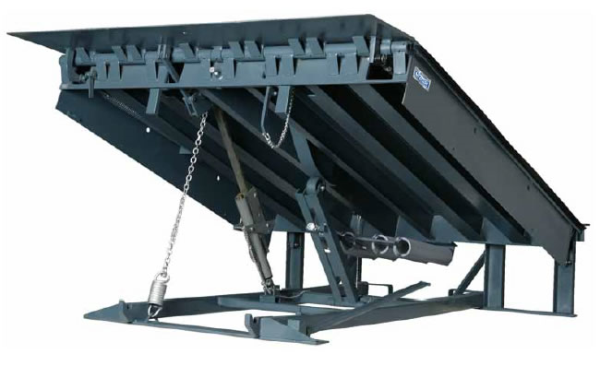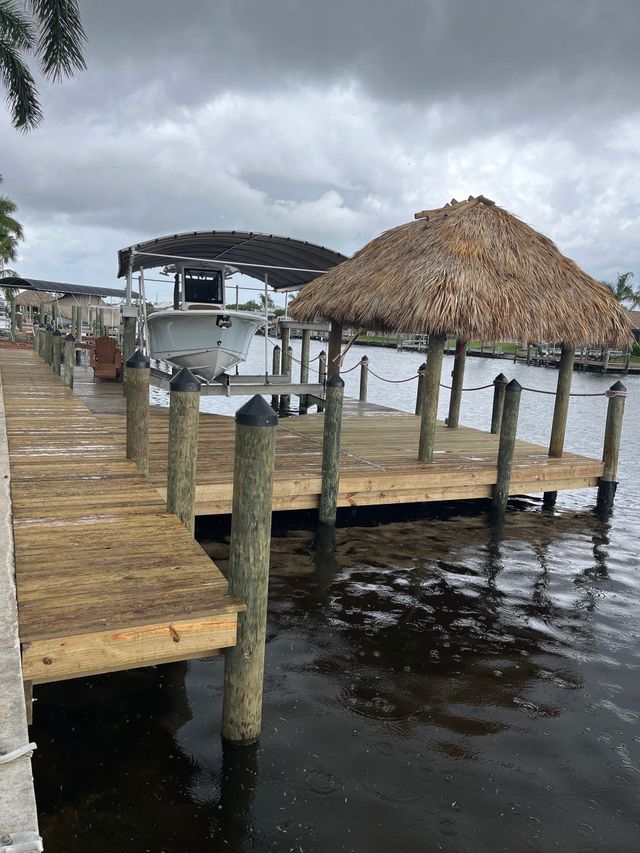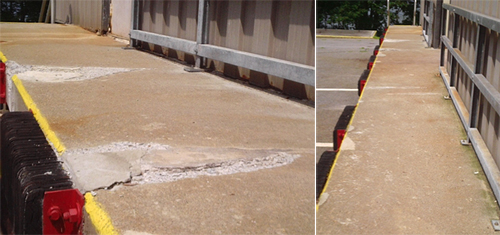Reliable Dock Fixing Techniques: Guaranteeing Structural Stability
Guaranteeing the structural honesty of docks via reliable repair strategies is paramount for the longevity and security of aquatic centers. This involves a multi-faceted method beginning with detailed evaluations utilizing advanced technologies like sonar tools and remotely operated cars (ROVs) to spot both visible and hid damages. Consequently, choosing the right repair work products, such as composite materials and corrosion-resistant alloys, is crucial for longevity. Architectural reinforcement techniques, consisting of the application of cross-bracing systems and load-distribution plates, play a vital role in mitigating stress factors. The significance of these techniques becomes noticeable when discovering advanced repair work approaches and preventative maintenance techniques.
Examining Dock Damages
Analyzing dock damages is a critical initial step in guaranteeing the structural integrity and safety and security of any kind of docking center. Key aspects to take a look at consist of the dock's foundation, pilings, decking, and hardware (Dock Repairs).
Structural engineers or certified examiners typically carry out these assessments making use of specialized devices and techniques. As an example, undersea assessments could utilize sonar equipment or remotely ran automobiles (ROVs) to detect immersed damage. Over water, aesthetic evaluations are complemented by utilizing dampness meters and various other analysis devices to reveal underlying concerns not quickly noticeable to the nude eye.

Picking Repair Work Materials
Picking the appropriate fixing products is a critical action in the dock reconstruction procedure, one that straight influences the durability and efficiency of the repaired framework. Product choice must be driven by aspects such as ecological problems, load-bearing requirements, and compatibility with existing dock components. As an example, timber is a conventional selection for docks because of its natural strength and visual charm. Selecting the right kind of timber, such as pressure-treated lumber or normally rot-resistant species like cedar or teak wood, is crucial to hold up against aquatic settings.
In addition to wood, composite products are increasingly popular due to their resilience and reduced maintenance demands. Composites, generally made from a blend of plastic and wood fibers, supply exceptional resistance to rot, bugs, and UV damage. For metal anchors, selecting corrosion-resistant alloys such as galvanized steel or marine-grade light weight aluminum is important to protect against corrosion and ensure architectural honesty in saline water conditions.
Epoxy materials and marine-grade sealers are vital for fixing fractures and sealing joints, offering a waterproof barrier and enhancing the dock's overall toughness. By carefully selecting top notch products, dock repairs can achieve long-lasting outcomes, therefore guarding versus future deterioration and guaranteeing secure, reliable use.
Structural Reinforcement Techniques
Effective architectural support strategies are important in ensuring the security and durability of dock repairs. One essential technique includes using steel or composite support bars (rebar) within concrete frameworks. Rebar gives additional tensile stamina, protecting against splits and distributing tons a lot more uniformly. This approach is particularly reliable for anchors exposed to hefty loads or harsh ecological problems.
Another important technique is the application of fiber-reinforced polymers (FRP) These materials use high strength-to-weight proportions and superb resistance to deterioration, making them my company ideal for reinforcing wood or concrete docks. FRP can be applied in strips or sheets and adhered with epoxy materials to enhance architectural honesty.
Bracing and securing systems likewise play a crucial function in architectural support. Cross-bracing, utilizing metal or wood beam of lights, can combat lateral pressures, reducing swaying and movement. Securing systems, such as helical piers or driven heaps, provide a steady foundation by transferring tons to much deeper, more stable soil layers.
Last but not least, the assimilation of load-distribution plates can help disperse weight extra evenly throughout the dock's surface, reducing local stress and anxiety points. These methods collectively guarantee that docks remain secure and durable, capable of holding up against the rigors of their operational setting.
Advanced Repair Service Approaches

An additional innovative strategy entails undersea welding, which allows for repair work to be carried out without the need to dewater the area. This technique is particularly beneficial for resolving architectural concerns in submerged dock elements, making certain marginal disturbance to procedures. Boosted welding methods, paired with robot systems, supply precision and integrity, thereby expanding the lifespan his comment is here of the dock.
Additionally, cathodic defense systems are executed to avoid rust in metal dock frameworks. By utilizing sacrificial anodes or amazed present systems, these techniques successfully mitigate the electrochemical processes that bring about material damage.
Last but not least, advanced tracking innovations, such as architectural health and wellness tracking (SHM) systems, offer real-time data on the problem of dock frameworks. These systems allow aggressive upkeep and prompt treatments, ultimately guaranteeing the long-term structural stability of the dock.
Maintenance and Avoidance
Upkeep and prevention are basic ideas that underpin the longevity and safety of dock frameworks. Regular assessments are critical, enabling for very early detection of damage, possible weak points, and environmental influences. An aggressive strategy, entailing regular look for rust, rot, and architectural changes, mitigates expensive repair work and extends the dock's functional life.
Precautionary actions must consist of applying safety finishes to metal parts to secure against rust and visit site utilizing cured wood to resist degeneration. In addition, ensuring appropriate drain and ventilation can stop water accumulation, which is a common source of structural destruction. Integrating quality products and sticking to maker standards throughout building and construction and repair service phases likewise play critical roles in enhancing sturdiness.

Training personnel in dock maintenance finest practices guarantees consistent application of safety nets. Leveraging technological advances, such as drones for assessments and sensors for real-time monitoring, can even more boost upkeep efforts. By focusing on upkeep and prevention, dock owners can guarantee architectural honesty, functional safety, and cost-efficient monitoring over the dock's lifespan.
Conclusion
In verdict, maintaining the architectural stability of marine facilities necessitates thorough dock fixing strategies. Advanced repair strategies, paired with normal maintenance methods, make sure the dock stays functional and secure under varied environmental problems.
Making certain the architectural honesty of docks through effective repair service techniques is vital for the longevity and safety and security of marine centers.Picking the proper fixing materials is an essential action in the dock repair process, one that straight influences the durability and performance of the fixed structure.Reliable structural reinforcement strategies are essential in guaranteeing the stability and durability of dock fixings. By focusing on maintenance and avoidance, dock proprietors can make sure structural stability, functional security, and cost-efficient management over the dock's life expectancy.
In final thought, maintaining the structural stability of marine centers necessitates extensive dock repair methods.